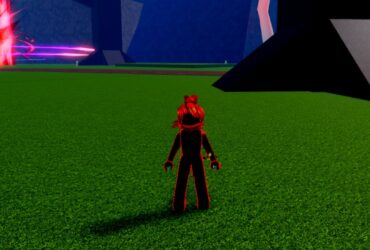With an early access launch that has already drawn massive attention, Path of Exile 2 is ranked among the most-played games on Steam before it’s even fully launched. By building on the depth of its predecessor with a robust system of classes in Path of Exile 2 and ways to develop them, the ARPG’s wealth of gameplay customization resembles the array of offerings in Dungeons and Dragons.
The Ascendancy system of Path of Exile 2 is the game’s approach to class specialization, providing each broader option with what is reminiscent of subclasses. With how granular some of these get on top of their generally streamlined design, there are striking similarities and clear separations from the numerous examples set by DnD across editions and sourcebooks.

Related
Path of Exile 2 vs Diablo 4: What’s The Difference?
Path of Exile 2 and Diablo 4 may look like similar games; here are all the differences so you know which is right for you.
Warrior and Ranger Ascendancies Mirror Dungeons and Dragons’ Martial Classes
Warrior Resembles DnD’s Barbarian
Instead of the predictable Fighter parity, Path of Exile 2‘s Warrior is more oriented towards raw power and resilience than battle tactics.
- Warbringer evokes DnD‘s Ancestral Guardian and Totem Warrior subclasses through abilities like Answered Call interacting with ancestor spirits, or Jade Heritage, providing a layer of toughness for tanking.
- Titan departs from strict parallels to emphasize stuns and AoE slams, bringing DnD‘s crowd control mechanics into a format more tailored for ARPG combat.
Ranger Incorporates the Familiar and Unconventional
As a class bearing strong similarities to its DnD counterpart, Ranger is more represented by the Deadeye Ascendancy. This heavily favors boosting traits like accuracy in the vein of the Archery Fighting Style from Dungeons and Dragons, but the Pathfinder introduces an entirely new flavor.
- By taking more traits from an alchemist, the Pathfinder focuses on throwing concoctions. Ironically, thrown weapons are typically associated with DnD Barbarians, showing the limits of PoE’s experimentation.
On the contrary, the Mercenary class’ Witch Hunter Ascendancy also provides martial appeal through explosive damage and an anti-elemental magic focus, bridging the gap between Rangers and more hybrid builds.
Path of Exile 2’s Magic-Based Ascendancies Flip Dungeons and Dragons Tropes into New Configurations
The Witch Class Echoes Warlock Themes
With the dark concepts behind its Ascendancies, Path of Exile 2‘s Witch taps into what resembles the more sinister elements of DnD. The Infernalist features a focus on fire damage and summoning which clearly parallels The Fiend subclass, even going so far as to have an ability called Pyromantic Pact for extending Mana use. The Bloodmage, however, occupies a genuinely novel Dungeons and Dragons class niche that hasn’t been filled consistently.
By combining elements of Dungeons and Dragons‘ Sorcerer and Wizard, the Sorcereress’ Ascendancies are essentially taken directly from their subclasses. The Stormweaver is an obvious allusion to Storm Sorcery with lightning magic, but the Chronomnacer draws on the time manipulation power of the Chronurgy School Wizard within a new ARPG context.
Monk Favors Magic Over a Martial Archetype
Departing significantly from its more physical DnD counterpart, Path of Exile 2‘s Monk features two magic-infused Ascendancies. The Invoker roughly aligns with the Way of the Four Elements subclass, but it focuses more directly on ice and electricity over that much variety. The Acolyte of Chayula, however, takes the Way of Darkness Monk from a stealth-based playstyle and makes it an option with actual damaging darkness magic in their arsenal.
The Mercenary class also has a unique angle with the Gemling Legionnaire, an Ascendancy based around embedding gems into the skin of a character for the sake of elemental resistance and enhancement of Skill Gems. This takes on elements of the Gemwright Artificer from DnD, but its heavier investment into blending martial and magical gameplay styles feels like a wholly original take.













Leave a Reply